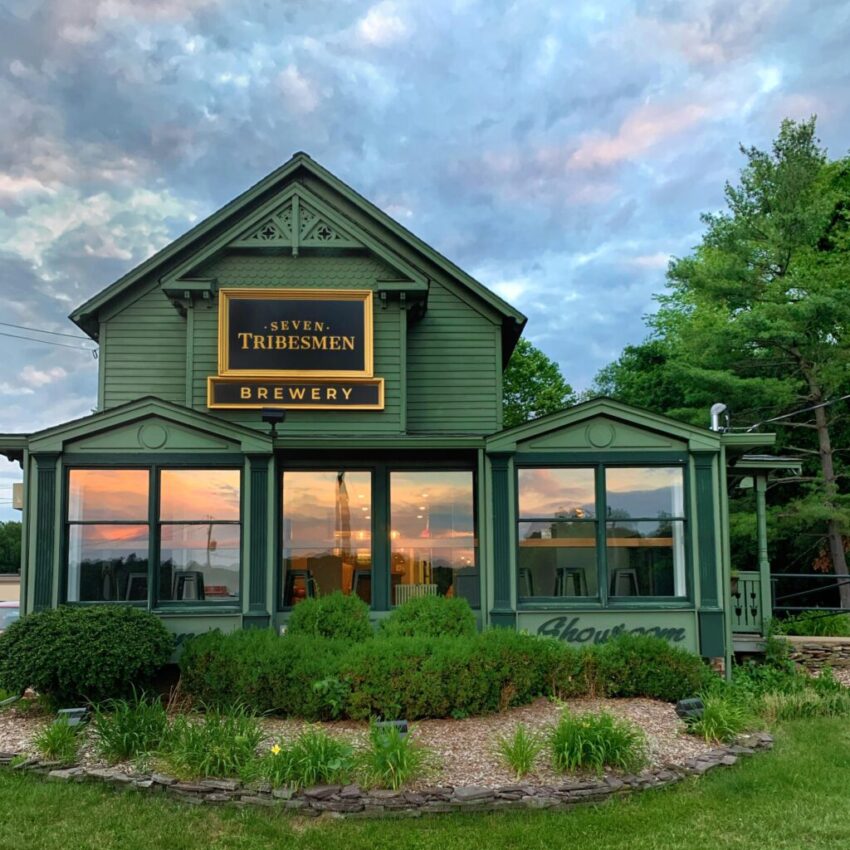This is an abridged version of the original article published on 777blog on 24 March 2023.
When we moved to New Jersey in the summer of 2022, we found out that nearly everyone from the Hungarian community had been at the Seven Tribesmen Brewery—whether as a full-time employee, a temporary helper, or simply a customer. However, we didn’t meet the owner for a long time, as he had been in Hungary for several weeks on business. His extended family, including his wife’s parents and siblings’ families, are key members of the Passaic St. Stephen Magyar R. C. Church community and the Garfield Scout Troop. Varga is also frequently seen at Hungarian events, most often selling beer. When his wife recently invited me to join a Trivia Night, I gladly accepted, as it gave me the chance to see the brewery and have a conversation with the second-generation Hungarian founder-owner.
***
From NASA to Brewing Beer
This time, my usual first question wasn’t how László Varga ended up in America, but rather how he got into brewing beer, since I already knew that his education and career at NASA, where he works as a Quality Assurance Specialist in Aircraft Operations, had absolutely nothing to do with brewing beer…Varga—since there are several Lászlós in the local Hungarian community, he is simply called ‘Varga’, even by his wife—informed me that the idea of opening a brewery first came to him in 2016, when he took his family to the Hungarian Tanya in Pennsylvania. There, he tried Kombucha, a fermented tea made by a childhood friend, and he liked it so much that he began experimenting with brewing it at home. ‘I’ve been drinking beer for quite some time, on occasion in larger quantities, namely during college, but I didn’t really connect with craft beer until around 2016, when I transitioned from making fermented tea at home to brewing beer. I realized that in order to make small batches of beer, you need similar equipment to that for fermented tea, which has much lower alcohol content. One of my original ideas for a unique recipe was paprika beer, to incorporate Hungarian flavors into my brews. It’s an American amber ale base infused with sweet Hungarian paprika, but I’ve since created a spicy version as well. I brewed over 75 recipes at home, and I fell in love with the brewing process so much that I started considering doing it professionally. I dove deep into the subject, read a lot, really enjoyed it, and quickly grasped the science behind it. At the same time, I started visiting breweries to see how others were doing it,’ as he recalled the beginnings.
At the time, Varga’s NASA project, which required a considerable amount of travel, was nearing completion. While still working in an office job, he began looking for something that presented a new type of challenge. In 2017, he decided to start brewing beer professionally. By then, he and his family had moved from Ohio to New Jersey, but he continued his employment in Ohio and had to commute on-site one week per month, driving over six hours each way. He then began searching for a suitable brewery location, looking at about 20–30 properties, including ones where other local breweries eventually opened. One day, while he was running errands in Wayne, New Jersey, he saw a ‘For Sale’ sign on the building in which Seven Tribesmen eventually opened. The owner was a retiring furniture maker who cared deeply about who’d take over the building. Of all the interested buyers, which included a dog grooming salon and a restaurant, he found Varga’s venture the most promising, as Varga ensured he’d preserve the character and history of the building, and even kept most of the furniture for the tasting room. From the time the agreement was made, it took a full year for the sale to be finalized through the legal process. ‘It was a stressful time—not only for me but for the owner as well. He had already shut down his business, but the costs kept piling up. Finally, in May 2018, we took over the building, and that’s when our two-year renovation began. After work, I spent evenings here with my friends, building everything you see here today.’
Scout Friends Building the Brewery
Varga credits scouting for all the friendships that helped him build the brewery. As fate would have it, each of his friends was looking to change jobs or careers just as he approached them with his brewery idea. The first to join was Imre Varga, a New Brunswick scout and specialist in marketing who was already considering a career shift. Together, along with their initial business partner—who has since left—they began the physical work. The next to join was Miki Imrányi, an architect and also a New Brunswick scout, who helped with planning, construction, and design, including branding and logo development. Zsolt Janka, a Transylvanian-born hospitality expert who had moved to New York at age nine, was another childhood scouting friend. Since he had recently relocated nearby, he was already considering a job change. At one point, another Hungarian friend was planning to open a brewery in Long Island, and they considered launching together. Ultimately, Varga took a different path—for him, it was crucial that his brewery had a Hungarian identity. ‘When I was younger, New York was great, but I grew out of it. Commuting there wouldn’t have been practical financially or logistically. But we still support each other—I’ve brewed beer with them multiple times as I’ve learned a lot from them and other breweries,’ he explained.
While working on the renovation, Varga enrolled in a ‘Brewery Immersion Course’ in Colorado, where he learned about the multiple aspects of running a brewery. ‘I wanted to ensure that by the time the construction was completed, my knowledge was strong enough not only from the aspect of brewing, but from a business aspect as well,’ he explained and passionately continued on telling me how they unloaded and assembled the stainless steel brewing equipment when it arrived. ‘The stars aligned perfectly. Every single one of my friends’ skills was critical to the project. After years of preparation, in March 2020, we were finally ready to open with four beers on tap.’
Replanning: Navigating the Pandemic as a New Brewery
Just as the brewery was set to launch, the COVID pandemic hit, forcing New Jersey’s hospitality industry to shut down. After two months, the governor finally allowed businesses to reopen, but only for takeout sales. This required a complete overhaul of the business strategy and operational model. A team of about a dozen people—including Varga’s wife’s family and other scouts—worked tirelessly to fulfill long paper strips of online orders printed each morning. ‘People were fed up with the lockdown, and as soon as things started to reopen, everyone was eager to get out and find an activity. The Hungarian community supported us, but the bulk of our orders came from locals. The line outside the building was so long that we had to hire a police officer to manage traffic on the road and in the parking lot. My good friend, Tom Schachinger, became the “face” of the brewery, as he greeted customers, took the orders, and communicated them to the preparers inside,’ recalled with a smile.
‘The stars aligned perfectly. Every single one of my friends’ skills was critical to the project’
By early July, outdoor seating was permitted. However, this wasn’t in their original business plan, and at first, it wasn’t even legal. According to existing regulations, an outdoor beer garden had to be directly adjacent to the building, while their only available space was beyond the parking lot. Eventually, they were able to proceed thanks to a temporary COVID-19 regulation allowing restaurants and bars to set up outdoor seating. ‘We were in the middle of the pandemic, but the support from the community was truly heartwarming. You couldn’t buy a single picnic table—not in stores, not online, so Miki designed the tables, we bought lumber from a nearby sawmill, and built them ourselves with the help of friends. We set it up as a European-style beer garden, with ambient lighting—it looked great, and the business was doing well despite the challenges. Everyone was desperate to get out of their house,’ remembered Varga. However, there was one catch: beer taps weren’t allowed outdoors. They still had to pour beers inside, carrying them out on trays. A runner constantly shuttled between the bar and the outdoor seating area. At least five of them were working at a time, and weekends were packed. This setup lasted until late fall, when indoor seating was finally permitted under strict regulations. Despite subsequent COVID-19 waves, indoor operations were never shut down again. Still, some customers preferred to stay outside, so they continued running the beer garden with heaters. By spring 2021, they had finally reached the point they had originally aimed for in the spring of 2020—but by then, instead of four beers on tap, they had 12.
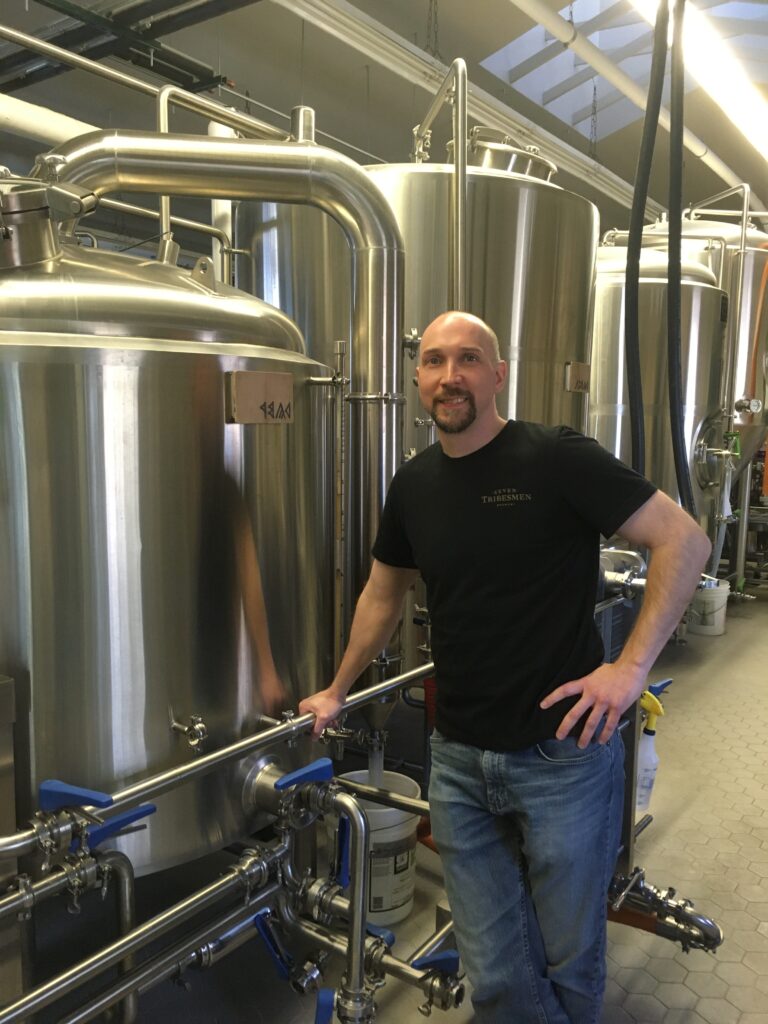
The first four beers were Varga’s personal favorites. But as time went on, he adapted the beer selection based more on market demand, working alongside their newly hired brewmaster, who had years of experience. When his business partner left and the brewery rapidly expanded, it quickly became clear that Varga could no longer handle everything alone. ‘I simply couldn’t keep up with the pace—brewing, running the tasting room, managing administration, and overseeing the company all at once. The brewmaster now manages production and has even hired an assistant of his own,’ explained the owner. ‘The craft beer industry is incredibly unique. There’s a level of camaraderie and openness between brewers that you don’t see in many other industries. We respect each other; we are aware that our strength lies in unity—with big brands dominating, that’s the only way we can compete. Before hiring the brewmaster, I personally visited his former employer and openly shared my plans. Not only did he accept it, but he fully supported me, and we’ve since collaborated on brews as well,’ Varga explained.
Business and Passion, Challenges and Opportunities
Over time, they began focusing on distribution, assembling a sales team, and approaching restaurants, bars, and retail stores. At first, they used external mobile canning services, but later they purchased their own canning machine, which allowed them to better control beer quality. Distribution was slow at first—few were aware of the brand, and while the beer quality was excellent, many other breweries also made good beer. ‘It was difficult to establish ourselves, but over time, we succeeded. A key factor was how we treated customers, how we presented our product, and represented the brewery—the aesthetic appeal of the building and the high-quality, attractive design also played a big role,’ divulged the founder.
They became so successful that they couldn’t keep up with orders, so they hired a highly experienced retiree who had helped countless companies launch and wanted to work with breweries in his retirement. He became their ‘brand ambassador’, selling their beer at farmers’ markets from spring through fall. By autumn, he transitioned into the sales team, where he secured over 100 new customers in just three months. Things moved too fast, and they struggled to keep up with deliveries, so the same employee took over distribution as well. Now, as farmers’ markets restart this spring, they are hiring an additional delivery driver. ‘If everything goes as planned, we’ll outgrow our current system by the end of the year. We only have space for two more fermenters, but our goal is to distribute beer throughout New Jersey. We have two options: outsource fermentation of our anchor beers and keep only specialty brews in-house, or open another brewing facility, which would require more investors. This industry is very capital-intensive, and I’m looking forward to the day when I can finally say: “It was financially worth it.” Until then, it’s just a deep passion for an expensive hobby. I love everything about brewing beer—despite the fact that New Jersey’s craft brewery laws are absolutely horrendous,’ Varga said, laughing cynically.
When asked to elaborate, he explained that New Jersey’s current liquor licensing system is a remnant of the Prohibition era. The state grants one liquor license per 10,000 residents, but retiring license holders don’t have to sell their licenses. Instead, they can hold onto them indefinitely, waiting for major investors—which means new licenses cannot be issued. This untenable situation led the state to introduce a separate licensing system for breweries in 2012. However, this was done in consultation with restaurants and distributors, resulting in highly impractical conditions for breweries, among which the biggest issue is that they are not allowed to serve food, except for pre-packaged, single-serve snacks. ‘A 12 per cent beer with just a tiny snack? That’s not enough; I’d say it’s even irresponsible on the part of the authorities.’ Customers can order food to be delivered to the brewery, but the brewery cannot facilitate the orders. ‘We are also prohibited from partnering with restaurants, and if we list restaurants in our online menu, we must include every single one of them, so we don’t appear to favor one over another. Some breweries ignore these rules, regularly coordinating with food trucks, which we stay away from, but we try to offer food pairings for each of our beers on our website—it’s another way to educate people about our beers,’ explained the owner.
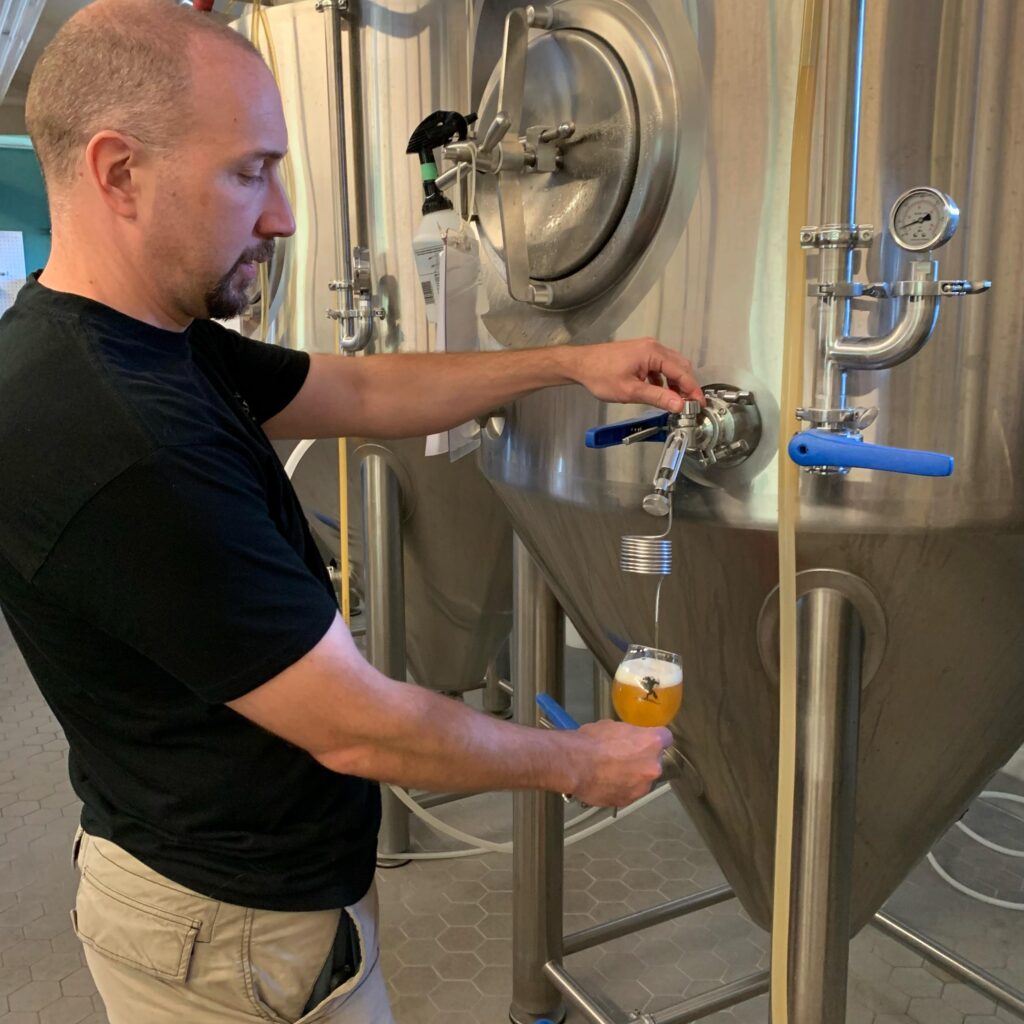
Despite the tight restrictions, Varga and his team try to maximize their opportunities. They use their annual 25-event limit for the spring beer garden opening, the brewery’s anniversary in early June, and Oktoberfest in the fall, among other events. On Wednesdays, they host Trivia Night, which they initially advertised heavily but is now self-sustaining—people come automatically. (Trivia also strengthens collaboration between breweries, as winners receive coupons to other breweries as prizes.) On Fridays, they tried hosting live music, but the results were mixed, as musical tastes vary widely, and attendance was inconsistent. They have been actively working to push for regulatory changes. New Jersey’s brewers’ association has already petitioned for a law revision, and there are encouraging signs. The governor has recently announced plans to revamp the liquor licensing system, which will be a long process due to opposition from industry lobbies. While this change doesn’t directly affect breweries, they hope that the governor will also be open to revising the restrictive laws stymieing craft breweries.
The Passion That Drives It All
When asked about his passion for brewing, Varga explained: ‘I never became a veterinarian, but I’m still fascinated by chemistry, physics, and biology. Every aspect of brewing beer is chemistry—from the mineral content of water to the character of malt and the execution of the brewing and canning. Making good beer is not easy. But making good beer consistently—that’s even harder,’ he smiled proudly.
By now, they no longer do small test batches—they know which flavors work well together and have access to shared industry knowledge. ‘Because of the open exchange of information among craft brewers, we can research everything beforehand. So instead of test batches, we go straight to brewing a full 1,200-liter batch—even when trying something new or unusual, like our recent beer made with sweet-citrus pine needles from Montana,’ explained Varga. However, even when a new beer turns out perfectly, the biggest challenge is brewing it again under the same conditions. ‘Malt and hops change over time. Sometimes, the fruit purée we used is no longer available, or the price has skyrocketed, and we have to find a substitute. In winemaking, it’s accepted that each year’s vintage tastes different. But with beer, people expect the exact same flavor every time. But that’s what I love—I see it as a challenge. That’s exactly why I got into this industry,’ he laughed.
‘Making good beer is not easy. But making good beer consistently—that’s even harder’
‘As mentioned, nowhere else do businesses share information so freely and help each other so openly. Secondly, most of my team consists of friends from scouting. And thirdly, we’ve built a loyal customer base as well. Keeping them engaged takes a lot of work, but I see that as another challenge—and I love it,’ said the founder.
However, finding good staff has been one of the biggest struggles. ‘Bartending is great for a twenty-something-year-old living at home, but we can’t offer long-term financial stability for someone in their thirties who wants to start a family. College students are only available seasonally. Since COVID, hiring has been especially difficult. People got used to getting paid by the government to sit at home, and now the overall work ethic has diminished, while higher wages are demanded and employment terms are dictated…That’s a generalization, but almost every company is struggling with hiring right now. That’s why I started hiring scouts—they value hard work, and they appreciate being part of a Hungarian inspired company. After all, scouting is based on volunteer work,’ concluded Varga proudly.
Hungarian Identity in America
When asked about the importance of his Hungarian heritage, Varga shared insights into his family history. His father, born in Hungary, fled the country in 1956 at the age of 19, escaping to Vienna, where he finished high school at the Piarist school and began university studies. In 1962, a friend invited him to the U.S. for drywall construction work—a trade that many Hungarian emigrants were involved in at the time, supported by Hungarian contractors. He arrived in New York in the winter of 1962, intending to save money—but ended up staying permanently. While working during the day, he attended Columbia University at night, earning a degree in architecture and later working in his profession like many other Hungarians. During one of his visits back to Hungary, he went to the dentist—and that’s how he met his future wife. In 1977, she moved with him to the U.S. Arriving without speaking English and without family or relatives, her early years were challenging. However, over time, she learned the language, passed equivalency exams, and worked as a dentist. Their son, Laci, was born in 1980 in New York City and grew up there.
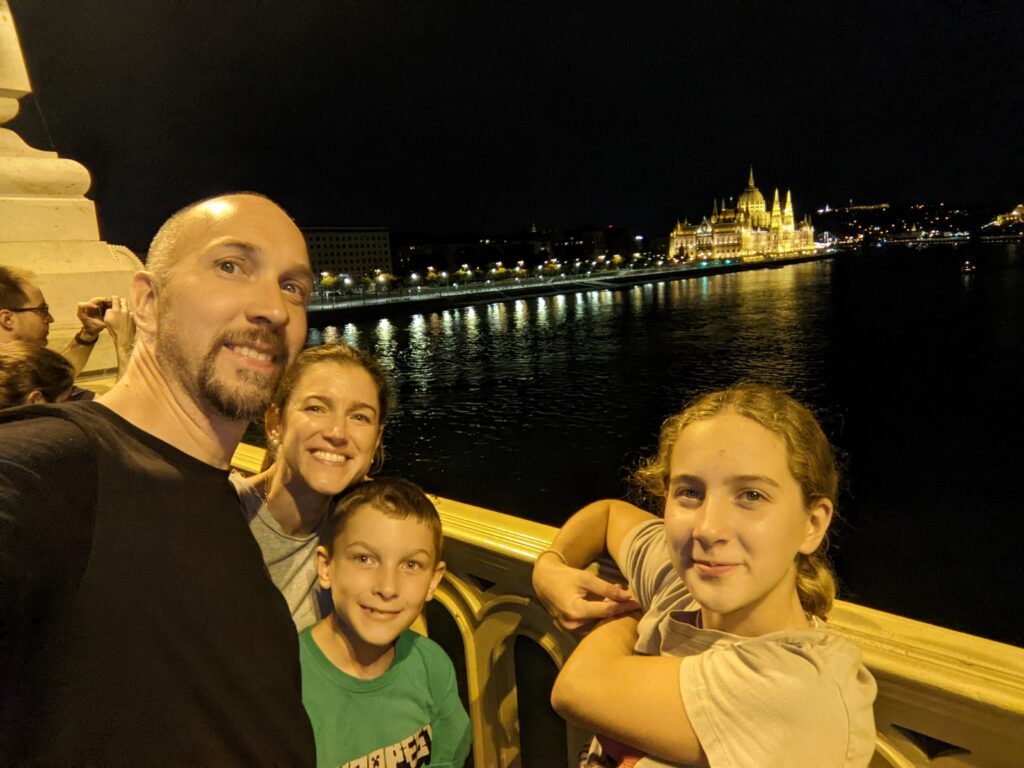
Every summer, he spent two and a half months with his grandparents in Budapest. In 2000–2001, he participated in a Hungarian Language Institute scholarship program for Hungarians living abroad, spending nearly a year in Budapest. ‘As a child, I made friends with the neighborhood kids, rode my bike everywhere, and joined the “BMX Bandits”, exploring the hills of Óbuda. As a parent now, looking back at what I put my grandparents through, I somewhat regret the things I did—but at the time, I loved it. That lasted until I was 13, but when I started getting into motorcycles, my grandparents said they couldn’t keep up with me anymore and didn’t want to take on the responsibility. After that, my long summer visits ended—instead, I only went for shorter trips, and they came to visit us. To this day, I miss Hungary, and my family and I make sure to visit at least once a year,’ said Varga.
Initially, Varga planned to become a veterinarian and attended university for two years to pursue veterinary studies. However, while working as a student assistant at a veterinary clinic, he quickly realized—during the first surgery he attended—that it wasn’t the right career for him. Since he had always been fascinated by aviation and travel, but didn’t want to be a pilot, he pursued a degree in aviation management. He chose a university in Ohio because he had many Hungarian connections in Cleveland and was able to join the local Hungarian scout troop, where he served as a leader. A Hungarian acquaintance helped him land an internship at NASA while he pursued his MBA. With his master’s degree, he was able to secure a full-time job with NASA, where he worked for over ten years in Ohio. During his time in Ohio, his scouting friends invited him to a birthday party in New Jersey—where he reconnected with Réka Pándi. They married in 2008 and later had two children, Emese (13) and Lackó (ten). Since Varga was still living in Cleveland, they started out in a long-distance relationship, which later became a long-distance marriage. However, when their daughter was born, they decided that Réka would move to Cleveland. When it became clear that she couldn’t continue her job as a manager remotely, they moved back to New Jersey, where both of their parents and Réka’s siblings lived.
‘I consider myself Hungarian and I’m proud of my heritage. I went to the Hungarian weekend school, the Hungarian scouting, and the Hungarian church in New York. My parents mostly spoke Hungarian, and my grandparents only spoke Hungarian—so my Hungarian identity was always a key part of my life. When I sat down with my scouting friends to discuss the brewery idea, we quickly realized we all felt the same way,’ he explained. His friends were most excited about this Hungarian project and made a collective decision that the brewery would have a distinctly Hungarian character, reflected in its name, design, and a few recipes as well. Even the construction workers—including the drywall installers, electricians, and flooring specialists—were Hungarian. The mural, based on Feszty’s Panorama, was painted by a friend who is also a Hungarian scout from Cleveland. The kopjafa-style beer taps were carved by Varga’s father-in-law, who continues to carve various projects for the scouts to this day.
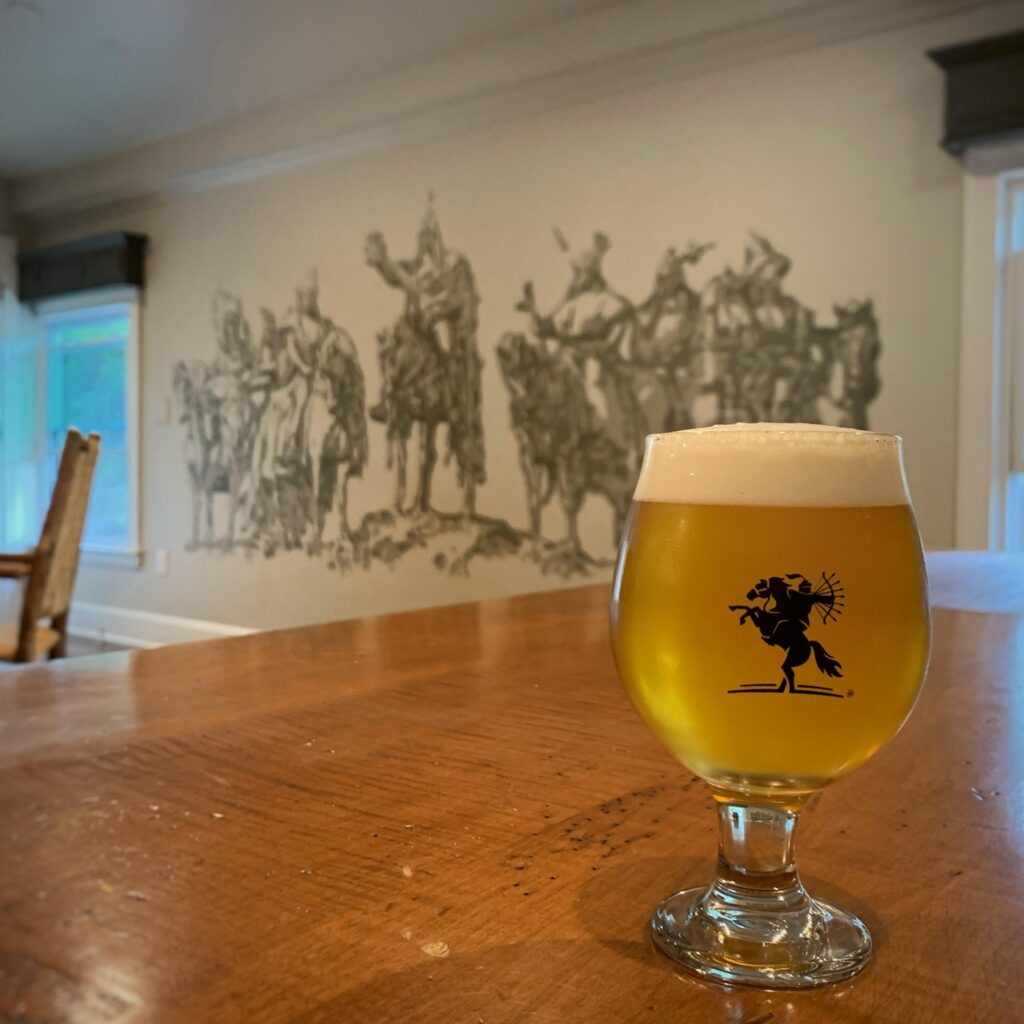
Varga shared that he tries to attend Passaic church events and wants to return to Hungarian scouting—though, for now, he is immersed in his work. In 2010, he took over the scout store from his father-in-law, who had run it for 30 years prior. Varga managed it for ten years, during the period when his wife stepped back from scouting after their children were born. Now, the roles have reversed: Réka is more active in scouting, while Varga is less involved. ‘I still work part-time for NASA, in addition to running the brewery. I can’t take on any more—I’m barely keeping my head above water as is. In the mornings, I help drive the kids to school. I try to be home for dinner every day, but I don’t always make it. Our weekly schedule is a puzzle, which we juggle with the grandparents, depending on our work commitments. I often have to work on the weekends as well, but now that we have a taproom manager, hopefully I’ll be able to step back a bit from that too,’ as he opened up about the difficulties of maintaining a balanced life. Finally, Varga shared why he spent so much time in Hungary last fall. Aside from family matters, he was working on a collaboration with a Hungarian brewery. He successfully partnered with Fehér Nyúl Brewery to create a new beer called ‘Rigó Jancsi’. He has also been working on a barrel-aging project using Tokaji Aszú wine barrels. Thanks to Baz Beer Brewery, located in the Tokaj wine region, he managed to acquire eight new Tokaji barrels from Tokaj-Hétszőlő Winery, which is a big deal, since Hungarian breweries also have long waitlists for them. ‘“Emese Álma” (Emese’s Dream), our 2023 anniversary beer named after my daughter, was a Belgian Quadrupel aged in the Tokaji wine barrels, and it turned out great. This year’s barrel-aged anniversary beer will be a stout with vanilla, chai, and oats. We also have a Munich Dunkel, a French Saison, and a Belgian ale aging in the barrels. Through this, we’re reinforcing our Hungarian identity, and we plan to create more Hungarian collaborations in the future,’ he said as we concluded our conversation.
Read more Diaspora interviews:
The post A Visit to the Seven Tribesmen Hungarian American Brewery appeared first on Hungarian Conservative.
Click this link for the original source of this article.
Author: Ildikó Antal-Ferencz
This content is courtesy of, and owned and copyrighted by, https://www.hungarianconservative.com and its author. This content is made available by use of the public RSS feed offered by the host site and is used for educational purposes only. If you are the author or represent the host site and would like this content removed now and in the future, please contact USSANews.com using the email address in the Contact page found in the website menu.

